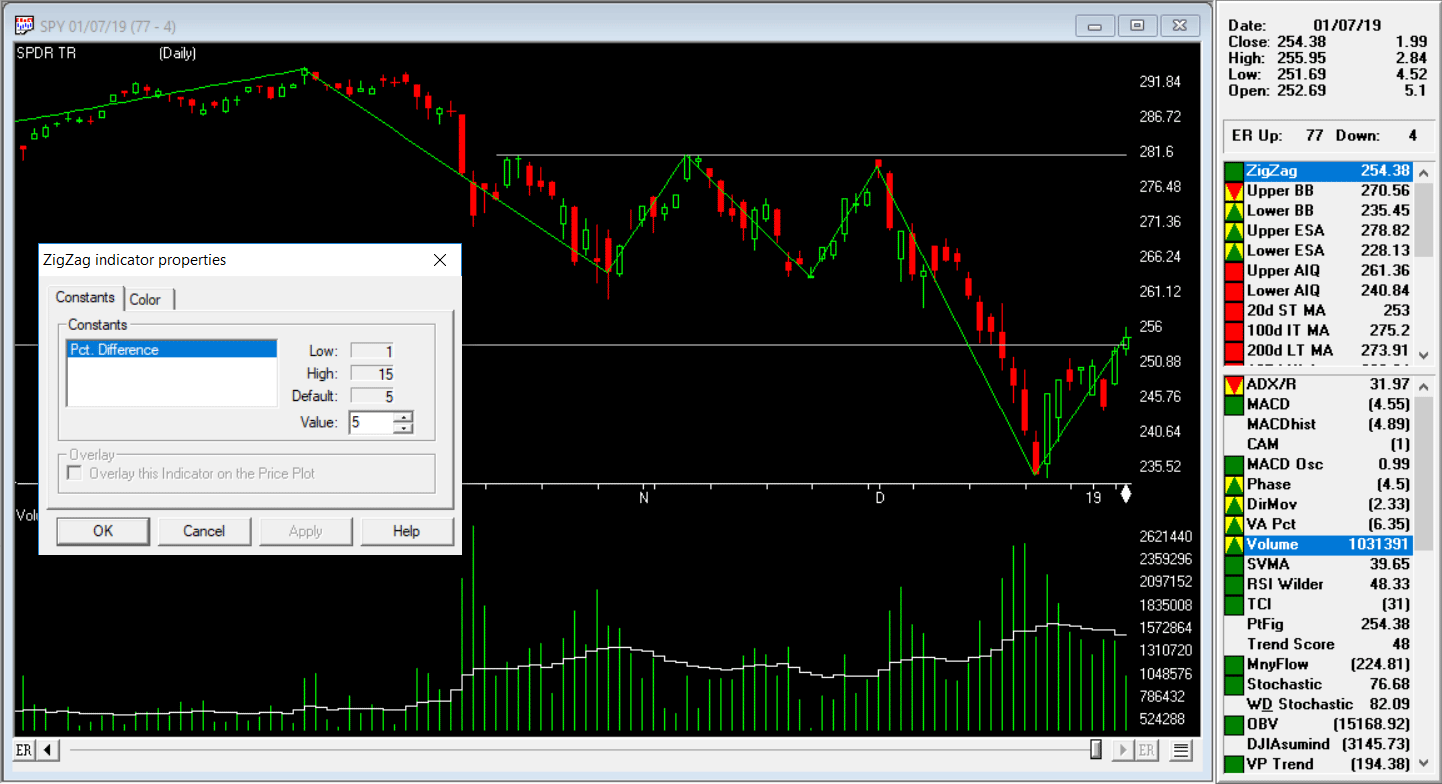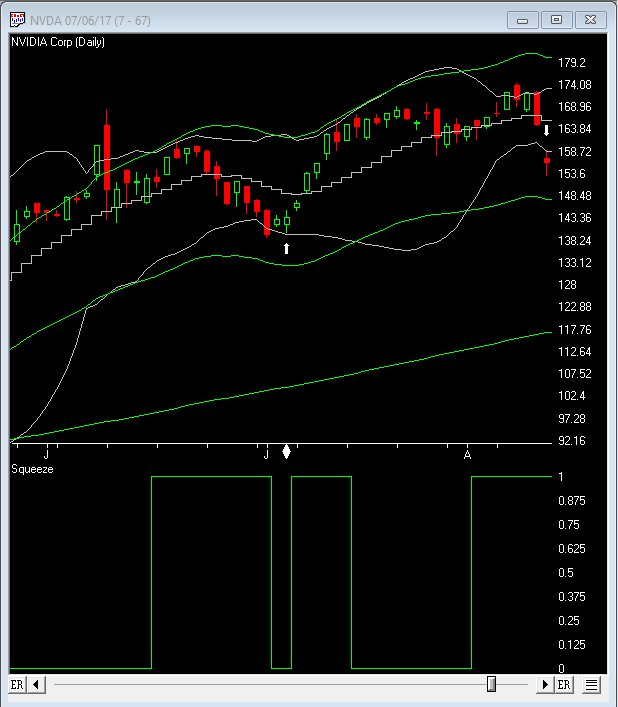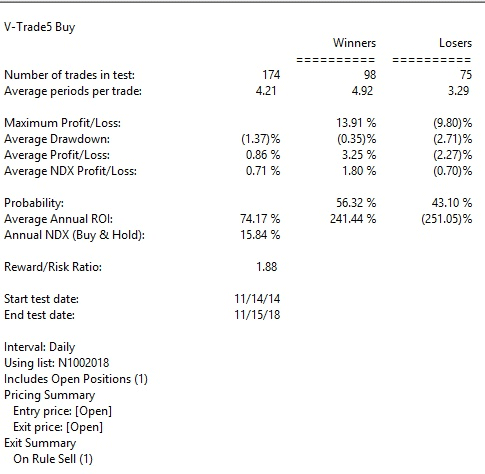May 5, 2019
Hello Everyone
2019 has rewarded us with average portfolio returns in a Moderate portfolio category between 8-14% so far since January 1, 2019*. A Moderate portfolio is a mutual fund portfolio with approximately 50-60% stocks and 30-40% bonds.
MARKET RECAP:
Since last month my computer models see the trends of the stock markets as Somewhat Cautious. Most of the sectors of the markets are at or near the old high of last September except:
- The healthcare sector is down 7% from last year’s high
- The small-cap sector is down 7%
- The midcap sector is down 3% and a few more.However, overall, the indexes are at or near their old high, and this is where we need to address as to whether the markets will breakout or top out here and head lower. With the markets up so much from the lows in December, stocks are overdue for some consolidation following the major rally this year and at its old highs of last September**.
- **See charts below as to whether the markets are overvalued and could sell off or continue to rise.
Where do we stand from an economic stance?
- The economy is still doing well:
- Job growth is outstanding with 263,000 new jobs created last month
- Unemployment at 3.6% is the lowest it has been in decades, and most economic measures are overall healthy.
- The tax reduction to corporations is making earnings rise
- The USA is enjoying the best overall economy in the world currently.Most of the economic surveys conducted suggested that the main problem with the markets is uncertainty with trade with China. The uncertainty could positively drop the markets down if the Trade War is not resolved in a positive outcome. Our economy has risen on an overall uptrend for about ten years, and it is overdue for a recession sometime over the next 1.5 to 3 years, but nothing seems to be on the horizon in the very near future.
- Interest rates remain relatively stable, and the most likely near-term outlook is for continued stability.
Index Averages
Some of the INDEXES of the markets both equities and interest rates are below. The source is Morningstar.com up until May 4, 2019. These are passive indexes.
| *Dow Jones | +13.57% |
| S&P 500 | +17.59% |
| NASDAQ Aggressive growth | +22.20% |
| I Shares Russell 2000 ETF (IWM) Small cap | +20.10% |
| International Index (MSCI – EAFE ex USA) | +13.10% |
| Moderate Mutual Fund | +10.20% |
| Investment Grade Bonds (AAA) | +4.88% |
| High Yield Merrill Lynch High Yield Index | +7.68% |
| Floating Rate Bond Index | +5.17% |
| Fixed Bond Yields (10 year) | +2.55% yield |
| The average Moderate Fund is up 10.2% this year fully invested as a 60% in stocks and 40% in bonds.*Explanation of each on the last page |
If interest rates are peaking and look to be flattening or declining over the next year then investment grade or multisector bonds technically might be better than floating rate bonds. But diversification is important.

The S&P is above. Notice the trend line in white. The technical indicators are Somewhat Cautious, in addition, this is not a time to add a good deal of money to the market. If you can see the white horizontal line at the top of the picture you will see that it corresponds with the high hit last September in the market. The old high hit on May 1, 2019 of 2954 intraday has to be broken through with a lot of volume or the S&P 500 could start to rollover. IMPORTANT, If 2904 is broken on close I will be getting more Cautious, if it closes below 2886, I will be getting Very Cautious as it would have clearly broken the 2019 Trend line. At that point, there would be some Buying support at 2852 its 50 day moving average.
The next graph underneath the S&P 500 shows the Momentum of the market is flattening out. This is also an indicator that the market is still good, but losing a little of the upside momentum and could fall here.
THE BOTTOM LINE:
The S&P 500 is right at its old high it hit last September. Traders are looking at this area very carefully as to whether it will break out of the 2954 number and follow through on the upside. I am Cautious on the market unless the S&P 500 rallies above the 2954 level on the S&P 500 and stays above that level for a least 2 to 3 days. If the S&P 500 closes below 2886 I would reduce some equity exposure as it would have broken a significant trend line and could push the S&P in a downtrend again. As for interest rates, they are back down to 2.55% on the ten-year bond. The tariff situation if not resolved would give investors a chance to sell and push the market lower. Other than that outside of ongoing political issues, the economy is doing relatively well, and a recession is not on the horizon, at least not over the next year. If you are a longer-term investor, stay the course, if you are in or nearing retirement, you may want to sell 10% of your holdings and rebalance your portfolio.
*A Support or support level is the level at which buyers tend to purchase or into a stock or index. It refers to the stock share price that a company or index should hold and start to rise. When a price of the stock falls towards its support level, the support level holds and is confirmed, or the stock continues to decline, and the support level must change.
Source: Investopedia
Support levels on the S&P 500 area are 2910, 2850, 2800, 2766, 2676 and 2600 areas. These might be BUY areas.
Support levels on the NASDAQ are 7979, 7801, 7572, and 7410.
On the Dow Jones support is at 26,240, 25856, 25,471 and 25,120. These may be safer areas to get into the equity markets on support levels slowly.
RESISTANCE LEVEL ON THE S&P 500 IS 2740. If there is a favorable tariff settlement, the market should rise short term.
Best to all of you,
Joe
Joe Bartosiewicz, CFP®
Investment Advisor Representative
Contact information:
Joe Bartosiewicz, FP®5, Colby Way Avon, CT 06001
SECURITIES AND ADVISORY SERVICES OFFERED THROUGH SAGE POINT FINANCIAL INC., MEMBER FINRA/SIPC, AND SEC-REGISTERED INVESTMENT ADVISOR.
Charts provided by AIQ Systems:
Technical Analysis is based on a study of historical price movements and past trend patterns. There is no assurance that these market changes or trends can or will be duplicated shortly. It logically follows that historical precedent does not guarantee future results. Conclusions expressed in the Technical Analysis section are personal opinions: and may not be construed as recommendations to buy or sell anything.
Disclaimer: The views expressed are not necessarily the view of Sage Point Financial, Inc. and should not be interpreted directly or indirectly as an offer to buy or sell any securities mentioned herein. Securities and Advisory services offered through Sage Point Financial Inc., Member FINRA/SIPC, an SEC- registered investment advisor.
Past performance cannot guarantee future results. Investing involves risk including the potential loss of principal. No investment strategy can guarantee a profit or protect against loss in periods of declining values. Please note that individual situations can vary. Therefore, the information presented in this letter should only be relied upon when coordinated with individual professional advice. *There is no guarantee that a diversified portfolio will outperform a non-diversified portfolio in any given market environment. No investment strategy, such as asset allocation, can guarantee a profit or protect against loss in periods of declining values.
It is our goal to help investors by identifying changing market conditions. However, investors should be aware that no investment advisor can accurately predict all of the changes that may occur in the market.
The price of commodities is subject to substantial price fluctuations of short periods and may be affected by unpredictable international monetary and political policies. The market for commodities is widely unregulated and concentrated investing may lead to Sector investing may involve a greater degree of risk than investments with broader diversification.
Indexes cannot be invested indirectly, are unmanaged and do not incur management fees, costs, and expenses.
Dow Jones Industrial Average: A weighted price average of 30 significant stocks traded on the New York Stock Exchange and the NASDAQ.
S&P 500: The S&P 500 is an unmanaged indexed comprised of 500 widely held securities considered to be representative of the stock market in general.
NASDAQ: the NASDAQ Composite Index is an unmanaged, market-weighted index of all over the counter common stocks traded on the National Association of Securities Dealers Automated Quotation System
(IWM) I Shares Russell 2000 ETF: Which tracks the Russell 2000 index: which measures the performance of the small capitalization sector of the U.S. equity market.
A Moderate Mutual Fund risk mutual has approximately 50-70% of its portfolio in different equities, from growth, income stocks, international and emerging markets stocks to 30-50% of its portfolio indifferent categories of bonds and cash. It seeks capital appreciation with a low to moderate level of current income.
The Merrill Lynch High Yield Master Index: A broad-based measure of the performance of non-investment grade US Bonds
MSCI EAFE: the MSCI EAFE Index (Morgan Stanley Capital International Europe, Australia, and Far East Index) is a widely recognized benchmark of non-US markets. It is an unmanaged index composed of a sample of companies’ representative of the market structure of 20 European and Pacific Basin countries and includes reinvestment of all dividends.
Investment grade bond index: The S&P 500 Investment-grade corporate bond index, a sub-index of the S&P 500 Bond Index, seeks to measure the performance of the US corporate debt issued by constituents in the S&P 500 with an investment grade rating. The S&P 500 Bond index is designed to be a corporate-bond counterpart to the S&P 500, which is widely regarded as the best single gauge of large cap US equities.
Floating Rate Bond Index is a rule-based, market-value weighted index engineered to measure the performance and characteristics of floating rate coupon U.S. Treasuries which have a maturity greater than 12 months.
Short Term Corporate Bond ETFs seek to track the shorter maturity side of the corporate bond market. These are debt securities issued by companies and can include investment-grade debt, lower-quality junk or high-yield bonds. Short-term bonds are generally defined as those with maturities of less than five years coupon U.S. Treasuries which have a maturity greater than 12 months.
The 10–year Treasury note is a debt obligation issued by the United States government with a maturity of 10 years upon initial issuance. A 10–year Treasury note pays interest at a fixed rate once every six months, and pays the face value to the holder at maturity.





